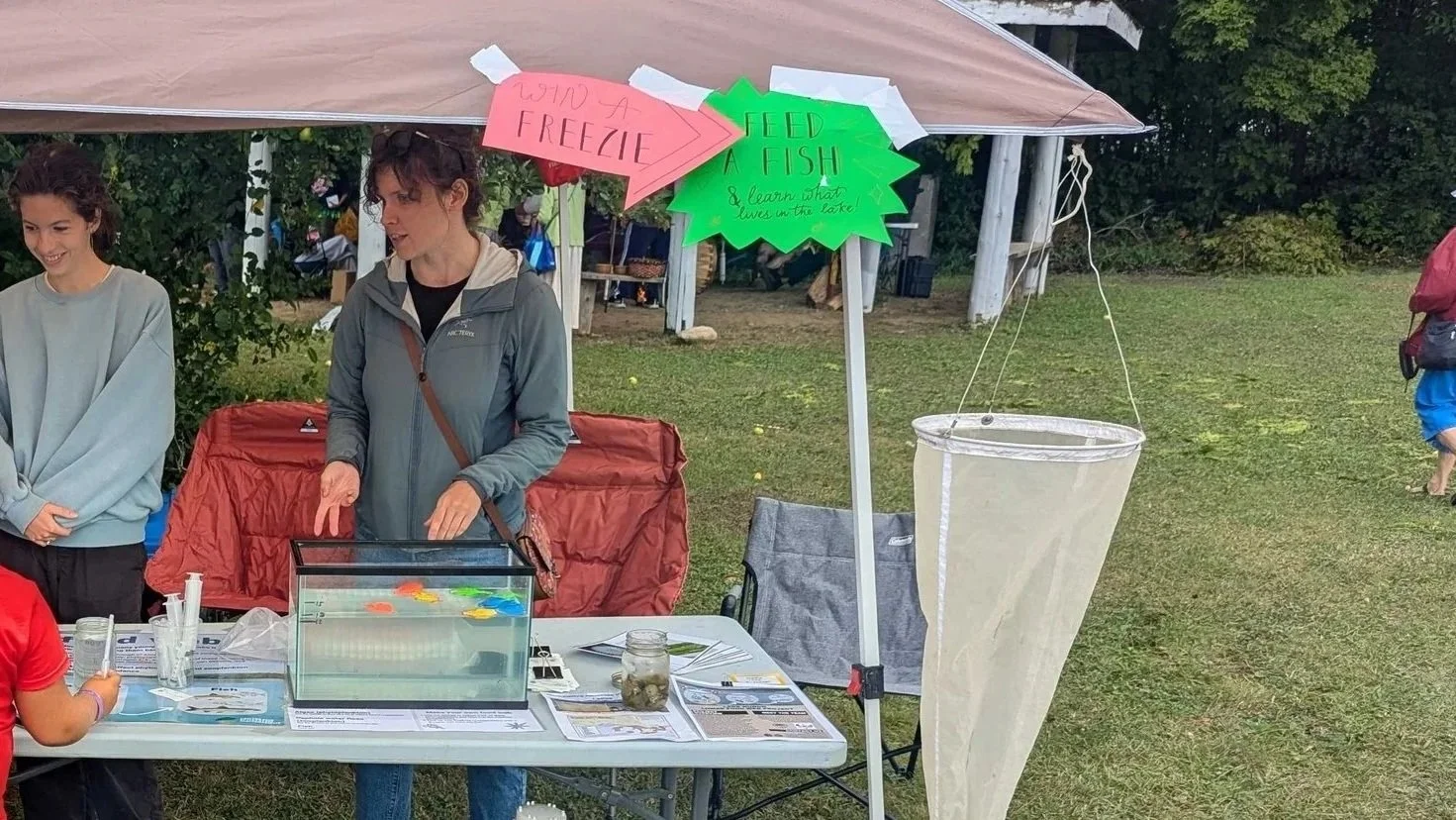Pow Wow Booth Engages Public on Lake Huron’s Changing Food Web
Photo credit: Dr. Kaleigh Davis
The 40th annual Neyaashiinigmiing Traditional Pow Wow brought together community and culture in early August in Cape Croker, attracting several hundred attendees from multiple states and provinces. Centre for Ecosystem Management (CEM) scientists working in partnership with scientists from the Nawash Fisheries Office were invited to join the event and host a community engagement booth to discuss ongoing collaborative work with the broader community. The collaboration focuses on the role of lower foodweb dynamics -- specifically links between nutrients, phytoplankton, and zooplankton -- in the ongoing recovery of dikameg (lake whitefish in English). At the Pow Wow booth, the team aimed to draw attention to the beauty and importance of the tiny organisms at the base of lake ecosystems and to create an opportunity for CEM researchers, new to work in Neyaashiinigmiing, to learn from community members about the local ecology.
Photo credit: Dr. Kaleigh Davis
Photo credit: Dr. Kaleigh Davis
The team's interactive booth featured several activities for children and adults -- from colouring pages to a more advanced game that challenged participants to use scientific equipment to wrangle live zooplankton called Daphnia. The latter was a huge hit, with several youth participants becoming verified expert Daphnia catchers by the end of the Pow Wow. A major hit among children and adults was a guess-how-many style game, where participants could guess the number of biologically-themed candies there were in a jar in order to win a prize. Several kids also donated their colouring pages or original drawings to the booth for display. The games were a blast for all involved and provided an excellent first introduction of the CEM scientists to the broader community.
Overall, the weekend was a resounding success -- researchers engaged with many Pow Wow attendees, many of whom took time to engage with the displays and discuss the changes they are seeing in the lake. The team looks forward to continued ecological research and community engagement in support of dikameg recovery in the region.
Pictured above: Georgian Bay (Cape Croker). Photo credit: Sveta Uzhova




